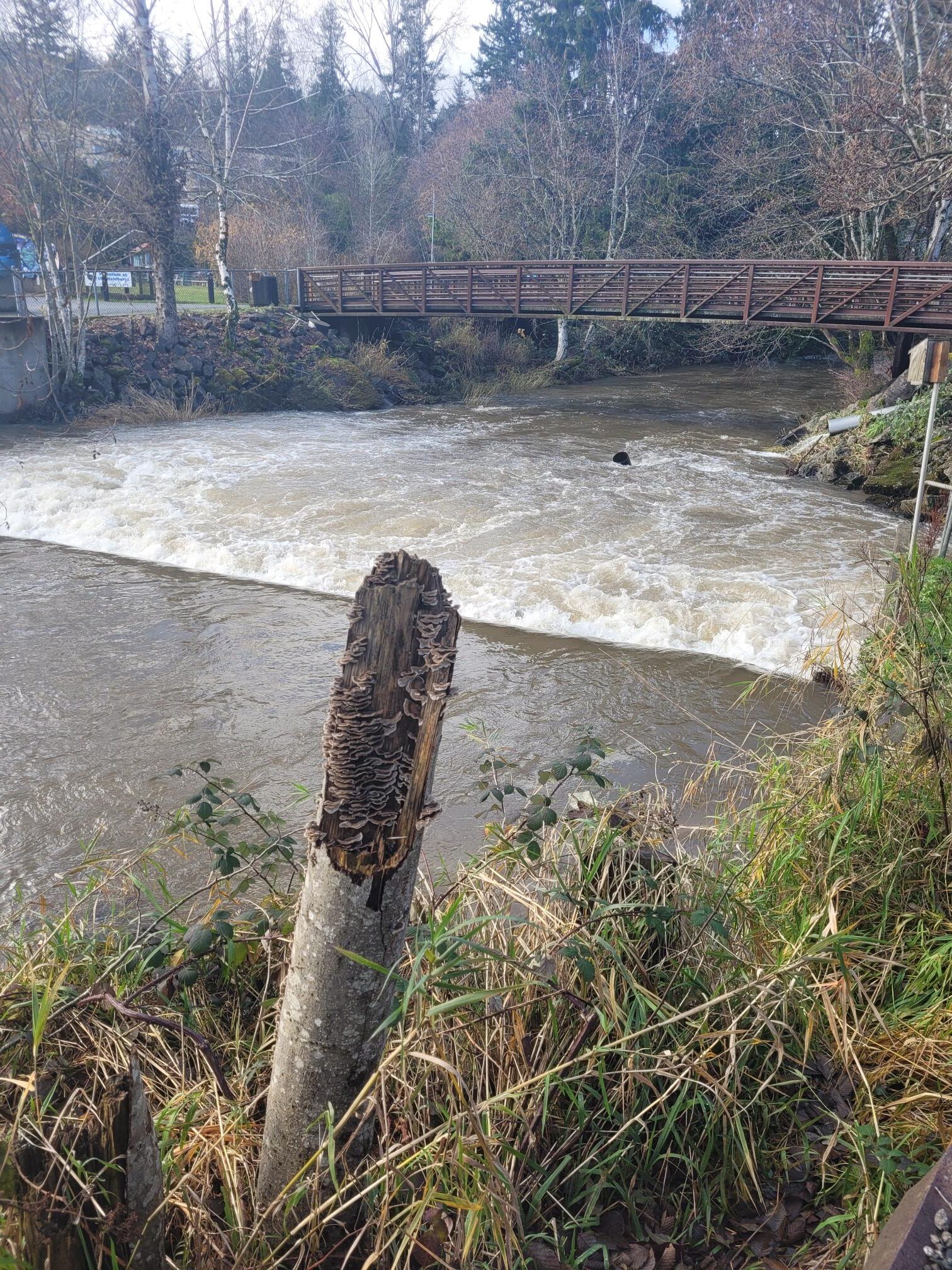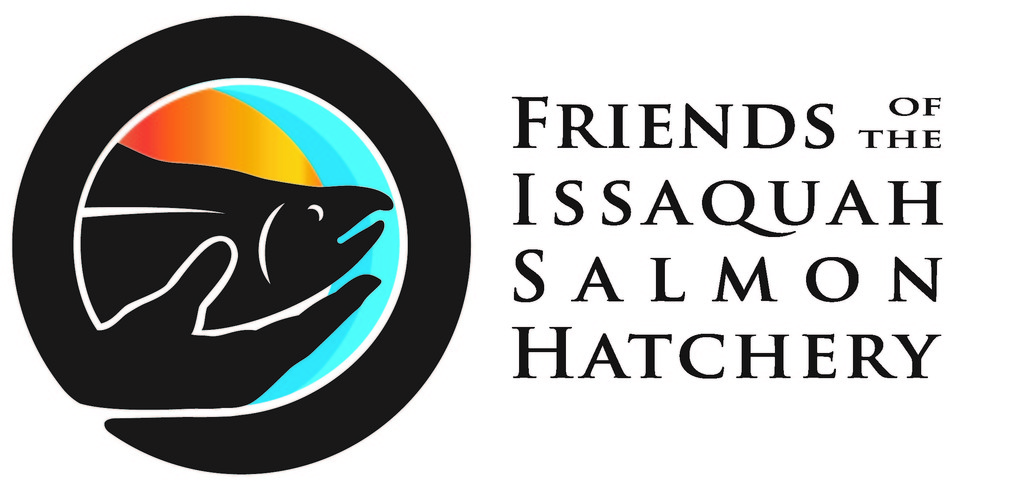Atmospheric River Meets Issaquah Creek
Atmospheric River Meets Issaquah Creek
You may have noticed that rain is in the news. You may have even been impacted personally (my daughter’s garage in Bellevue was flooded by the recent rains). So, what is the impact on our favorite fish? Let’s start with a few facts:
- River flows are measured in cubic feet per second – cfs
- These figures are from a USGS gage at the bridge over Issaquah Creek in front of the Dairygold plant
- My favorite online site to check the flow real-time is at: https://levels.wkcc.org/?f=dd2
- Our low flows in August were about 20 cfs, which also goes with higher water temperatures
- The highest flow in these records was in 02/2020, where it reached 2,700 cfs.
That came to less than a foot below the bridge at the hatchery, and flooded walkways and buildings
In addition to safety concerns with flooded roads and property damage, high flows affect our fish in a very serious way: flows above a certain level ‘scour’ any natural redds that were dug in the Creek, both above and below the weir. I hypothesize that level is about 1,200 cfs, which we have already exceeded. This may account for the low levels of Natural Origin (NOR – those bearing an adipose fin) adults that we see at the hatchery, around 2%. The naturally spawned eggs and emerging fry are blown out to the lake.
Check the website for realtime reporting on the local effect of the atmospheric river we are experiencing in the Pacific Northwest.
Submitted by Larry Franks

